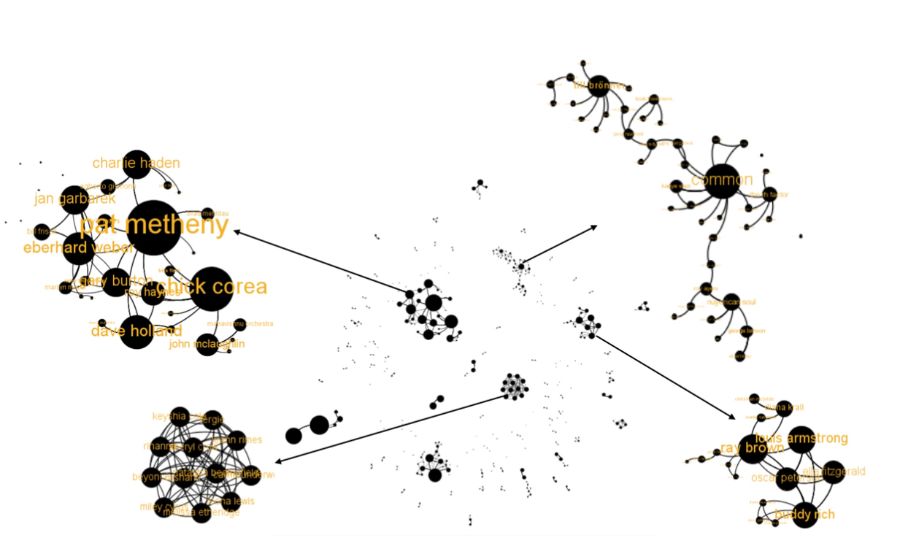Abstract
Collaboration happens when two organizations work together to achieve a common goal. These organizations share both each resource, be it ideas or skills. Most of the things that we observed in our surrounding is a product of collaboration. A movie is a collaboration of different actors and actresses, producers, writers, directors, or etc. A book is a collaboration between writers and publishers. Music is not an exception either.
Music may be a collaboration of different artists in the hopes of creating a piece of good music. In this work, network analysis is performed to study the collaborative nature of artist in the music industry. The network is first observed as a whole then sliced into a smaller granularity by filtering according to the genre. Comparison of the statistics obtained is done to show the difference in the structure of the different networks. The evolution of the network is also explored by doing temporal analysis on the music industry network. Outside-network information is used to check if homophily is present. Our results show that more and more collaborations are being formed through time.
With its emergence in the 1980s, artists seemed to do more music together for many reasons. Building the network of collaborating artists shows that the entire music industry is composed of well-knit communities and there are still a lot of artists that belong to the periphery of these communities. The music industry does not follow the characteristics of a random network. Collaboration network differs per genre. Music artists working on rap and hip-hop music tend to more collaborative. RnB and Jazz is more clique-ish compared to other genre. For the other genres, at least 30% of the artists still work in solo.



